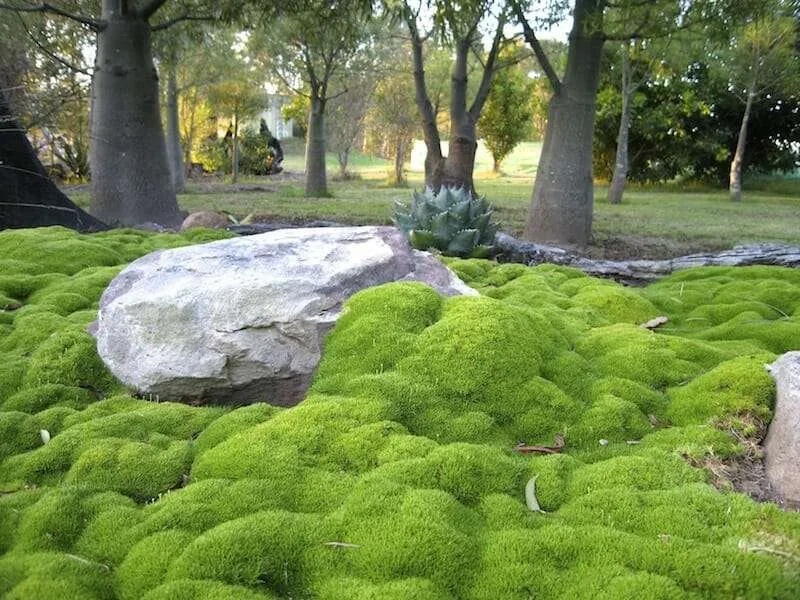Windsor Terrace is a residential neighborhood in Brooklyn, New York, just south of Prospect Park. My husband and I moved here four years ago, bringing with us some plants from our previous garden, also in Brooklyn. The move transformed my gardening life from an in-ground, 1,000 square foot space (albeit besieged by the mosquitoes that make New Yorkers’ ground-floor lives very interesting in summer), to a petite, self-contained townhouse terrace a fraction of its size. We traded the luxurious space of a kitchen garden for windowbox salads, and the mosquitoes for the clear air and wide skies of a top floor.
Photography by Marie Viljoen.

Because social media likes hashtags, I called our new little garden #thewindsorterrace. It is where we cook (over coals), eat, work, and relax. After a long winter cooped-up indoors, spring is liberating, and our lives expand as the little garden wakes up.

Spring on the sidewalks of the neighborhood is heralded by early cherry blossoms and Callery pears, which burst into bloom before trees have begun to think about turning green.

Above the street, on our small terrace, spring begins sedately. The clustered white flowers of Labrador tea (Rhododendron diversipilosum ‘Milky Way’) begin to open as the leaves of black snakeroot (Actaea racemosa) unfurl. The terrace faces north and east, and the mornings are sunny from spring through early fall. But in the shaded part closest to the building, plants that prefer dappled light or semi-shade do best.

In small spaces, texture is big. What you lose in a broad view, you gain in an appreciation of pattern and layers of green. And every inch counts.

Climbing plants are one of the urban gardener’s not-so-secret weapons. Going up allows more room for humans to move in tight spaces. If the plants are edible, even better. Native black raspberry’s leaves and new growth fill out in April. All raspberries adapt well to vertical situations, although they do need support or ties. (I use thin wire for support them and velcro ties to attach the canes at intervals.)

On the sunniest edge of the terrace is an improvised birch pole trellis, its rustic intention to interrupt the view of a wide expanse of barren rooftop below. In April clematis begins to send up new shoots that bloom in May, just as the peppery arugula flowers in the windowboxes make their way into nightly salads.

In a large terra cotta pot at the feet of the clematis a clutch of Allium schubertii begins to bloom. The bulbs overwinter in the pots and are one of the few that withstand the pitiless freeze-thaw challenge of winter without rotting. They are exceptionally attractive to bees and other pollinators, and their individual little flowers makes pretty edible garnishes for salads and deviled eggs.

I find it hard to live without roses, but every situation comes with unique challenges for them. The western end of the Windsor Terrace is very sunny (good for roses) but very exposed. A lot of New York weather arrives from the west. Whether it’s a frigid winter blast that super-chills the pot, or summer storms that beat up the shrub, ‘Julia Child’ wins where other roses have failed. What she lacks in exceptional perfume she makes up for with abundant, blowsy flowers on strong stems and very healthy foliage that resists the mildew-prone months of humid July and August. And I collect the butter-colored petals for the picnics that good weather inspires. The nemesias are a fragrant hybrid of an annual flower native to my South African homeland. Planted in early April they will keep flowering right through fall, as long as they are cut back at intervals.

Once most nights are reliably in the high 40’s or over 50’F, our flock of citrus trees moves outdoors. They share the terrace with us for six months until cold weather reverses the cycle and we all hunker down inside again. The Australian finger lime, or caviar lime (Citrus australasica) is a particularly rewarding small-space citrus tree because it is easy to keep trimmed-down to fit a windowsill-sized pot. It blossoms intermittently, beginning in spring, and its curiously finger-shaped fruits will ripen around December.

One of the plants that made the move with us is a nameless Rhododendron, which I dug up and planted in a temporary and enormous black nursery pot. It is so happy there, not flinching through frozen winters, that I never had the heart to re-pot it. Other plants at its feet obscure its humble home.

In the evenings that grow brighter and brighter we retreat to the terrace as though it were a small holiday. As we sip a ritual drink together, mockingbirds visit (encouraged by a dish of blueberries), an American robin’s song sweetens the city’s soundscape, and a bright cardinal broadcasts from the top of a catalpa tree. Later, in the twilight, a troop of raccoons may be silhouetted on nearby rooftop as leave their horse chestnut roost to lead very social lives and find their local dinner. We’re getting hungry, too, so I must collect some herbs from a nearby pot, and think about our meal. We will eat it here, surrounded by fairy lights and candlelight.
For a peek at Marie’s former Brooklyn garden, see:
- My Brooklyn Garden Rehab: 1,000 Square Feet, Season Two
- Rehab Diary: A Year in the Life of a Brooklyn Garden
- A Movable Garden: Saying Goodbye to a Brooklyn Backyard












Have a Question or Comment About This Post?
Join the conversation (2)